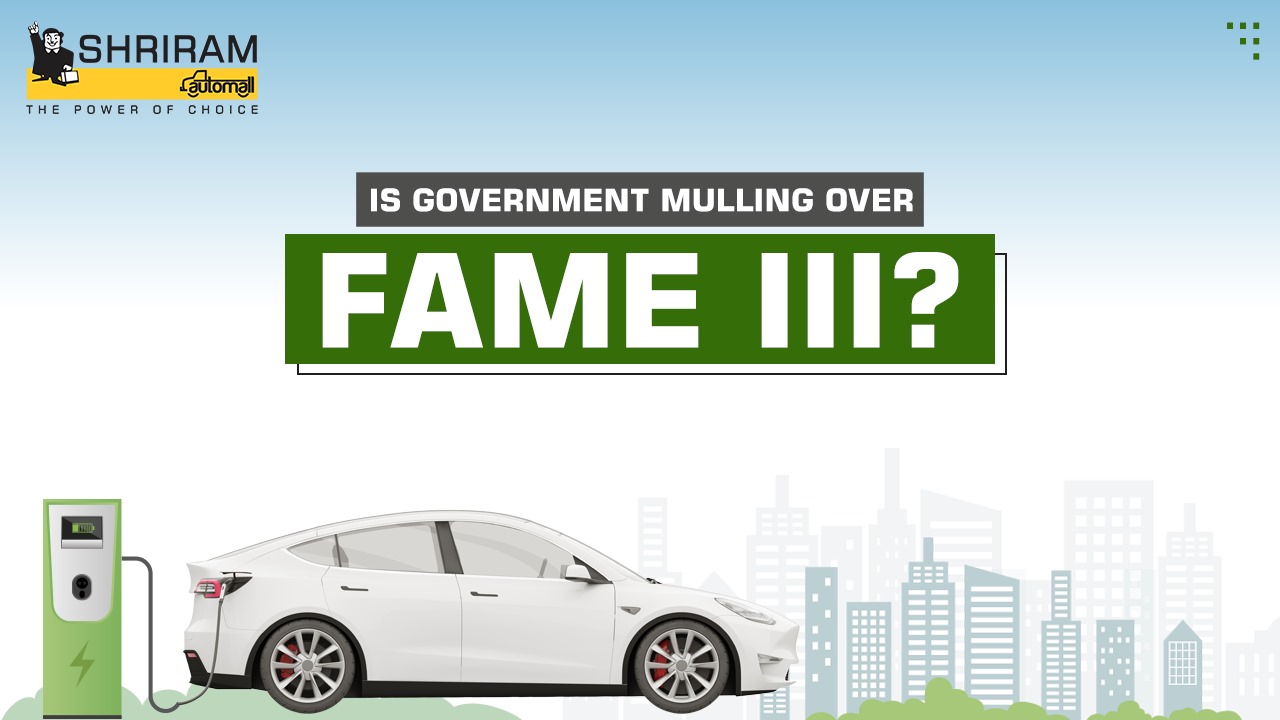Is the Government working on to expand scope of FAME benefits?

Reports indicate that the proposed third iteration of the Faster Adoption and Manufacturing of Electric and Hybrid Vehicles (FAME) scheme in India is poised to be nearly four to five times larger than the previous FAME 2, which extended a subsidy of Rs 10,000 crore. With a steadfast commitment to expediting the transition towards emission-free transportation, the Government of India is now contemplating the inclusion of electric bicycles, quadricycles, and large commercial vehicles under this scheme, alongside expanding the support for electric two-wheelers, three-wheelers, and passenger vehicles.
The anticipated FAME 3 scheme is expected to allocate a significant budget, approximately Rs 20,000 crore, to promote the adoption of electric two-wheelers. Insights from insiders also suggest that the government intends to emphasize electric vehicles (EVs), three-wheelers, and buses while monitoring emerging technologies like Flex fuels, hydrogen, and the synergy between renewables and EVs. Notably, various online reports highlight that charging infrastructure will be given particular attention in this initiative.
Presenting a comprehensive approach, the government has earmarked around Rs 13,000 crore for electric three-wheelers, with a specific focus on converting existing internal combustion engine (ICE) three-wheelers into EVs. Additionally, approximately Rs 12,000 crore has been allocated for electric buses and various modes of public transportation, encompassing subsidies for vehicles using flex fuels, hydrogen ICE, biodiesel, and bio methanol.
The forthcoming scheme is set to allocate over Rs 10,000 crore to foster emerging technologies, including support for the amalgamation of renewables and electric vehicles, innovative battery technologies, and battery recycling.
It is anticipated that the proposal for FAME 3 will be presented during the winter session of Parliament, which is slated to take place from mid-November to mid-December, following the conclusion of the monsoon session in August.
However, amidst these speculations, a spokesperson from the Ministry of Heavy Industries, Minister Mahendra Pandey, refuted the existence of any ongoing FAME 3 scheme, labelling such discussions as purely speculative.
Industry experts and stakeholders have underscored the significance of streamlined compliance, qualification criteria, and policy execution. Gurusharan Singh, Director of E Mobility India Electric Mobility Council, emphasized the importance of enabling supply-side components like Charging Infrastructure, Battery and Component Localisation, and End of Life Scrapping and Recycling within the revised FAME subsidy program.
The government is committed to Electric Vehicles. It has been articulated the government's recognition of EVs as an integral part of the energy transition, underlining the collective responsibility to shape the country's energy policies. Additionally, there is indications that a payment security mechanism vital for OEMs participating in bus tenders is under development, signalling a further development in this direction.
In conclusion, the introduction of the upcoming FAME 3 scheme in India marks a pivotal step toward fostering the widespread adoption of electric and hybrid vehicles. With its significantly larger budget compared to its predecessor, FAME 3 seeks to invigorate the EV market across diverse vehicle segments. This initiative's comprehensive approach, encompassing a wide range of vehicles from bicycles to buses, underscores the government's commitment to steering the nation toward a cleaner and more sustainable transportation landscape. While official confirmation from the Ministry of Heavy Industries is yet to emerge, industry insiders and experts anticipate that FAME 3 will play a vital role in shaping India's mobility trajectory.

 Download Our App
Download Our App



